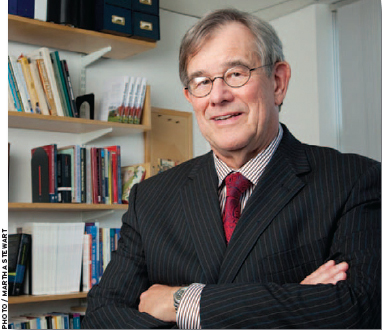 Americans know the nation’s schools are not doing well. According to results from the 2010 EdNext-PEPG Survey released in this issue (“Meeting of the Minds”), only 18 percent think the schools deserve an “A” or a “B,” while 25 percent assign them either a “D” or an “F.” These are the worst grades the U. S. public has given its schools since it was first asked to grade them back in 1981.
Americans know the nation’s schools are not doing well. According to results from the 2010 EdNext-PEPG Survey released in this issue (“Meeting of the Minds”), only 18 percent think the schools deserve an “A” or a “B,” while 25 percent assign them either a “D” or an “F.” These are the worst grades the U. S. public has given its schools since it was first asked to grade them back in 1981.
Americans tend to think their local elementary and middle schools are much better than those of the nation as a whole. The problems with schools, people seem to believe, are found somewhere else: Schools are dreadful in the inner city, perhaps, or in other parts of the country, maybe. My local schools are just fine.
On some measures, they may be right. Yet schools across the country fall short when it comes to challenging the best and brightest. In this issue’s cover story (“Teaching the Talented”), my colleagues and I find that schools in 29 countries are doing a better job of lifting students to the highest level of accomplishment in math than are schools in the United States.
In honor of W. E. B. Du Bois, I like to refer to the students who can reach the highest levels of accomplishment as the “talented tenth.” Du Bois, renowned scholar, activist, and founder of the NAACP, believed it would take a small group with exceptional talent to lift his fellow African Americans out of poverty into the mainstream of American society. His vision has been proven more right than wrong by the many outstanding black scholars, educators, entrepreneurs, musicians, and community leaders.
Du Bois’s insight applies as much to countries as to ethnic minorities. It takes some portion of the total community who have exceptional talent to sustain an increasingly productive national economy. That portion is not fixed at 10 percent, however. The percentage of a generation who are of high accomplishment can be as little as 1 percent or as high as 25 percent. It depends very much upon how they are educated.
Unfortunately, the United States educates only a little more than 6 percent of its students to an advanced level in math according to the National Assessment of Educational Progress (NAEP), a small percentage when compared to the proportion in many other countries that score at a comparable level on the international PISA test. The countries that do better spread from just north of the 49th parallel (Canada) across Europe (France, Germany, and the United Kingdom) to nations crossed by the Arctic Circle (Finland, Iceland, and Sweden) to the farthest reaches of Asia (Taiwan, Korea, and Japan) to just short of the South Pole (Australia and New Zealand).
Some people blame the state of the American school on a rising immigrant population or the black-white education gap. But the picture does not change much when one looks only at white students (only 8 percent of whom score at the advanced level) or at those who have a parent with a college degree, only 10 percent of whom are advanced. Even for these more-advantaged groups, achievement in math is well below what many other countries are doing for all of their students, regardless of ethnicity or parental education.
Countries with good schools become more productive and watch their economies grow, while those with poor schools eventually pay the price. If the United States is ever to pay off its vast and rising public debt, as well as the growing deficits in its teacher pension accounts, it will have to fix not only the nation’s schools but local ones, too.
— Paul E. Peterson


